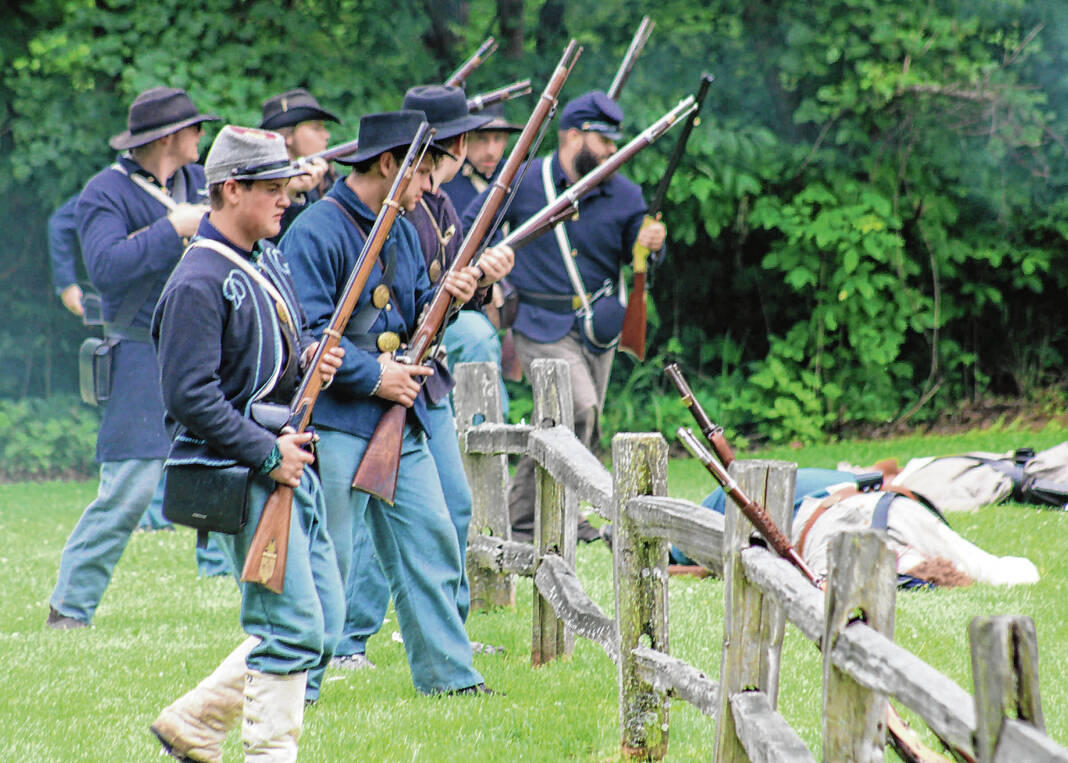
Union troops in mock battle with Confederates.
Lew Freedman | The Tribune
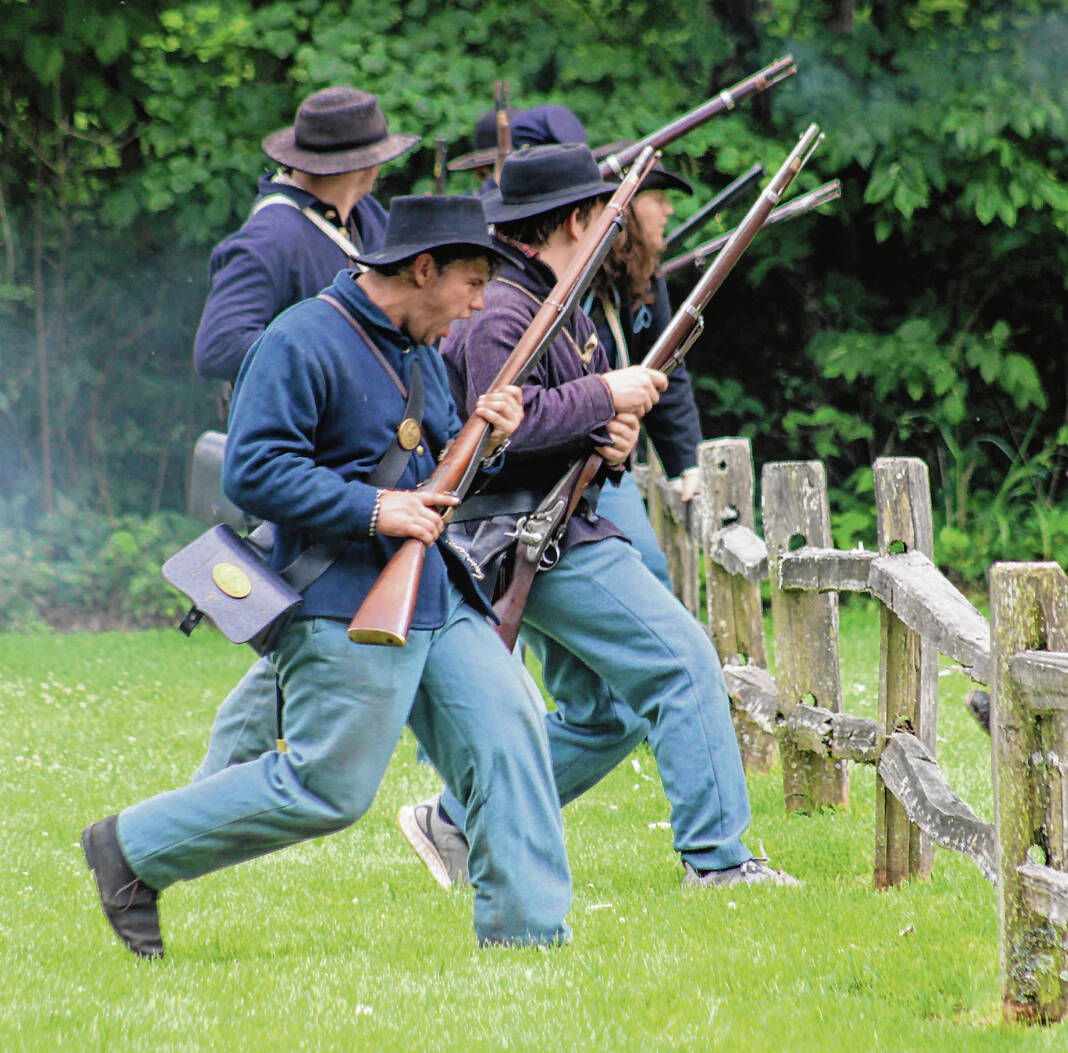
Union troops in a mock battle against Confederates at Spring Mill Park Living History Weekend in Mitchell on Memorial Day weekend.
Lew Freedman | The Tribune

Confederate troops shrouded in smoke from their own gunfire of blanks during a re-enactment battle against Union troops.
Lew Freedman | The Tribune
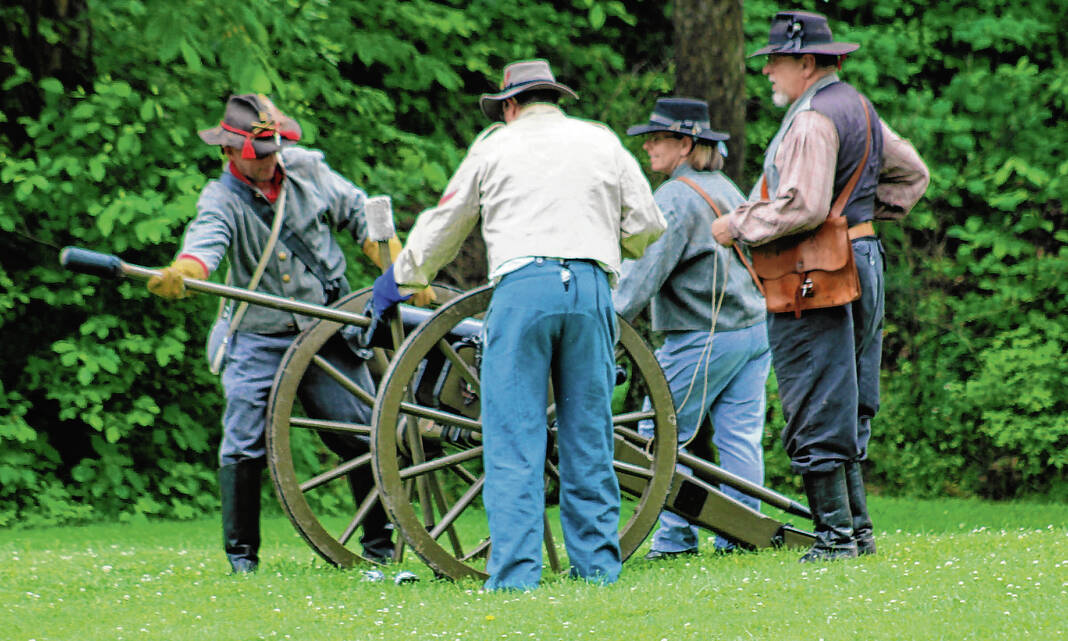
The Confederate artillery team, leader Andy Woolfolk at right.
Lew Freedman | The Tribune
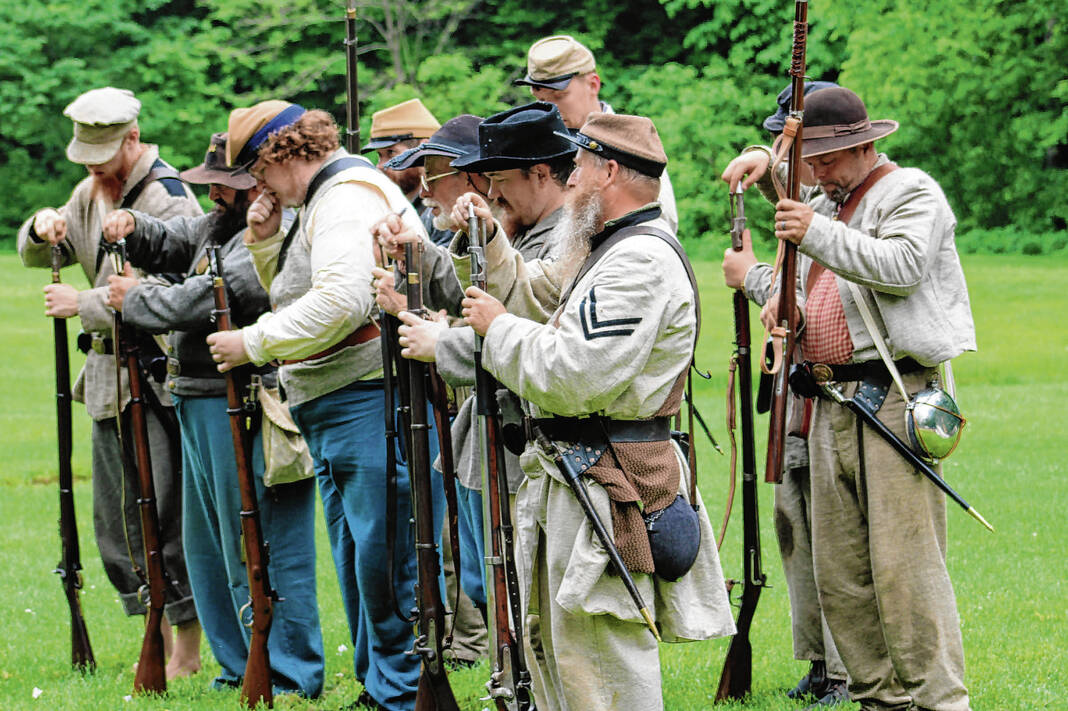
Confederate soldiers load their weapons prior to engaging Union troops in a mock Civil War battle Memorial Day weekend at Spring Mill Park.
Lew Freedman | The Tribune

President Abraham Lincoln re-enactor Danny Russel at Spring Mill Park’s Living History weekend over the Memorial Day holiday.
Lew Freedman | The Tribune
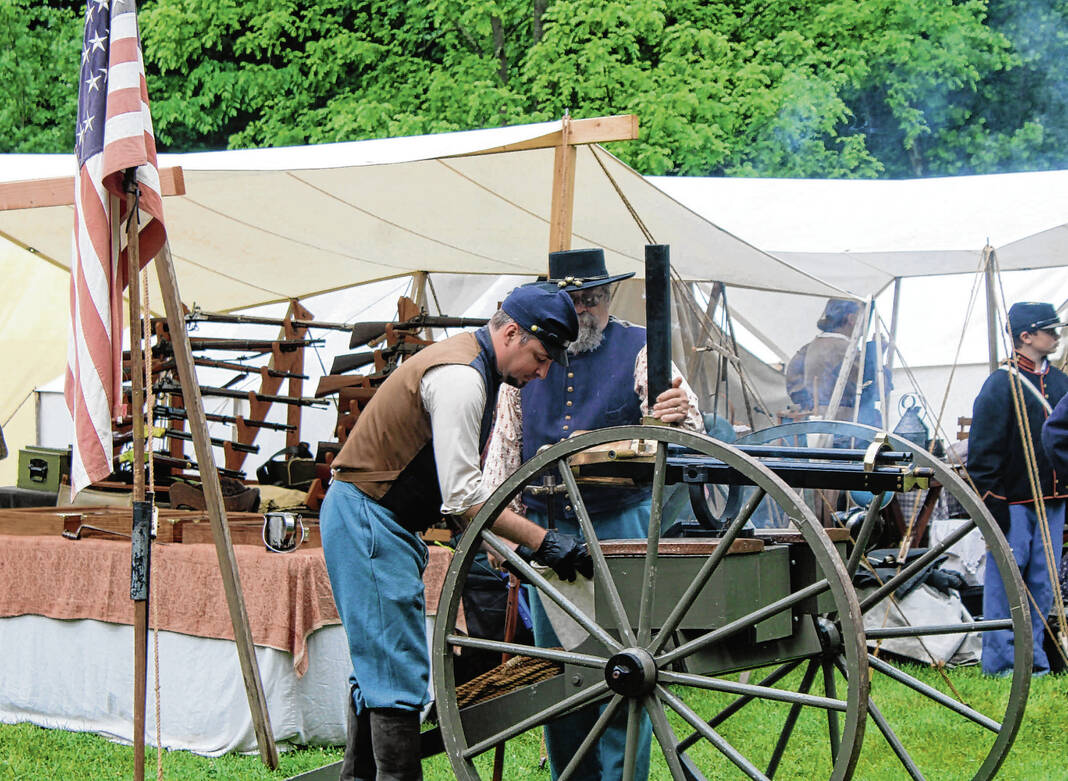
Captain Mike Marsh (rear) and Thomas Marsh provide a demonstration of the use of a Gatling gun.
Lew Freedman | The Tribune

White canvas tents served as the quarters for Union troops at the Civil War Living History Weekend at Spring Mill State Park.
Lew Freedman | The Tribune

The Gemini III capsule used by astronaut Gus Grissom on display at his memorial at Spring Mill State Park.
Lew Freedman | The Tribune
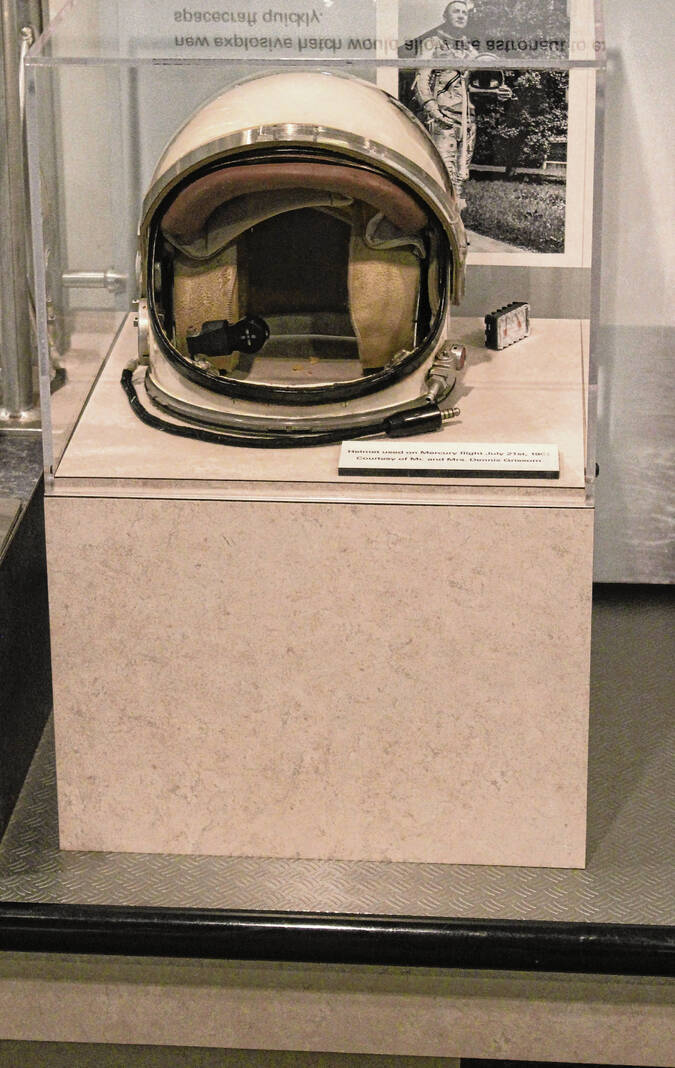
A space helmet worn by Indiana astronaut Gus Grissim in the 1960s.
Lew Freedman | The Tribune
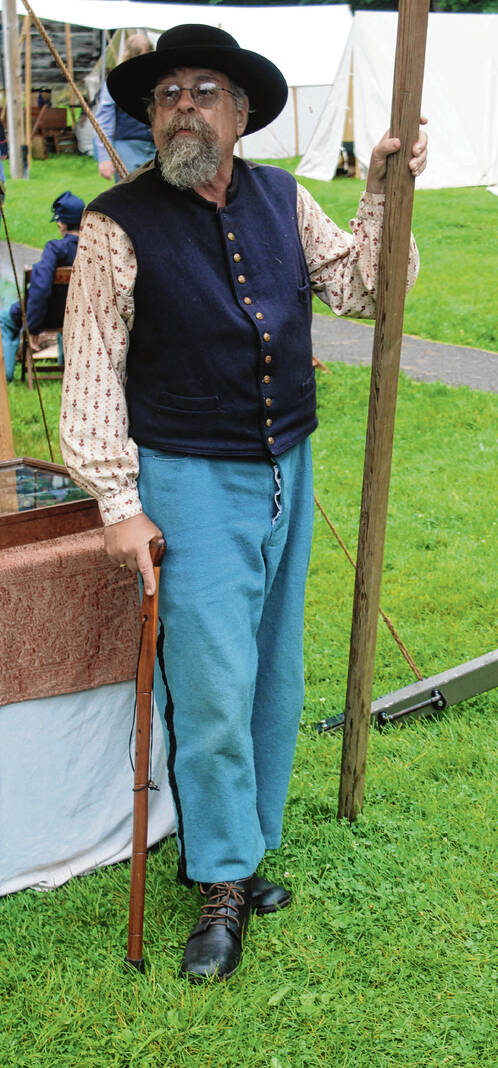
Mike Marsh of Columbus, a Civil War reenactor who was playing an ordinance officer.
Lew Freedman | The Tribune
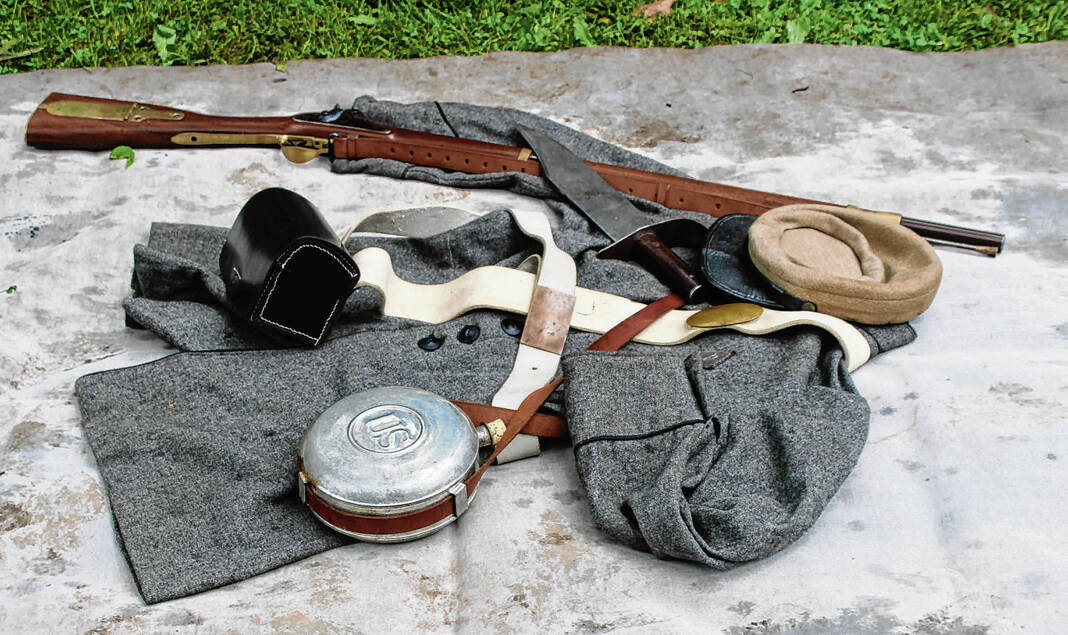
A sampling of Civil War period gear.
Lew Freedman | The Tribune
MITCHELL — The black stovepipe hat nearly brushed the doorframe as the tall, angular man arrived at the Pioneer Village Meeting Hall to a waiting crowd of about 50 people.
“My fellow Americans, it certainly is good to be here again in Indiana,” Abraham Lincoln said as he stepped behind a podium and unfurled an old flag of the United States.
Dressed in black frock coat with a cravat and black boots, Lincoln seemed spry for someone who would be 215 years old on this Saturday of Memorial Day weekend. The 16th president of the United States was a guest speaker at Spring Mill State Park’s Living History Weekend.
Just beyond the door of this 1860s hall, was a Union Army group camped in white canvas tents. Perhaps a half-mile yonder was a Confederate Army group. Soon, the twains were to meet in a battle re-enactment symbolic of the nation’s bitterest conflict, the 1861-65 Civil War.
Danny Russel, an Indianapolis actor who was the stand-in for Lincoln, told stories of Lincoln’s boyhood — his time spent in Indiana before he became famous from Illinois, then occupying the White House. Some tales branched into self-deprecating humor and others relayed were sad, when talking about the death of his mother.
This Lincoln deadpanned he had once offered someone a shiny penny, but was rebuffed: “Sir, if you don’t mind, I’d rather have a filthy $5 bill.” Both types of American currency have Lincoln’s visage imprinted on them.
More seriously, Mr. Lincoln quoted himself from the Gettysburg Address and spoke against slavery, calling it the world’s worst evil. He reminded listeners what the Civil War was all about.
Spring Mill State Park
Spring Mill, overseen by the Indiana Department of Natural Resources, is 1,358 acres in scope, with a mix of attractions including the Pioneer Village, consisting of a watermill and 19 other buildings including the Meeting Hall.
The park, which attracts 675,000 visitors annually, features the Gus Grissom Memorial, highlighting the life and career of the astronaut from Mitchell, a nature center, caves, sinkholes and campgrounds, all surrounded by lush timber.
DNR interpretative naturalist Coletta Prewitt noted the village was “pioneering the state and then (Grissom) was pioneering space.”
Virgil Ivan “Gus” Grissom, born in 1926, was one of the original Mercury 7 astronauts, the second American to soar into space in 1961 after flying 100 combat missions during the Korean War.
Grissom’s space capsule the Liberty Bell 7 dropped into the Atlantic Ocean nearly resulted in his drowning when the hatch opened prematurely.
Grissom’s Gemini III capsule from his second space mission, is on display at Spring Mill. After the troubles with the first capsule, Grissom called this one “Molly Brown,” a nod to the Broadway show “The Unsinkable Molly Brown.” NASA bosses were not amused.
In his direct style, after a safe return to earth, when reporters asked about his emotions, Grissom admitted he was “scared” most of the time.
For good reason. Grissom subsequently died with two other astronauts during an Apollo 1 test in 1967.
The Grissom exhibit is a memorial year-round, not merely the Memorial Day weekend, though perhaps one day there will be a Grissom re-enactor at the park.
Prewitt invited Russel to make an annual 30-minute presentation as Lincoln at Spring Mill for one of the park’s two Living History Weekend events each year. Lincoln, because “he was president during the heyday as a village. I’ve had a lot of people who say he is as good as a Broadway show.”
Abe might blush at the words, if one was close enough to see beyond the appropriate beard and beneath the famed replica hat.
Russel offers a multi-faceted view of Lincoln, the idea of which he said after decades of summer stock acting, was inspired by his wife Teresa. She suggested he give the role a whirl because he: A) is tall, 6-foot-2 to Lincoln’s 6-4; B) is “skinny” like Lincoln; and C) was interested in Lincoln, of whom Russel said left behind a million words to use to read his mind.
“My wife saw something I never did,” Russel/Lincoln said.
The Gatling Gun
The colorful appearance of a Gatling gun at the Union encampment was a highlight.
The repeating gun that helped define the Old West Indian wars was invented by Richard Jordan Gatling in 1861 and although it was barely sufficiently produced enough to make a mark in the Civil War it remains today a forbidding looking and noisy weapon.
Mike Marsh of Columbus presided over a Gatling demo with blanks, but it was still loud and smoky. Marsh, a captain Union ordinance unit re-enactor, said the gun that shook up watchers was a replica of the real Gatling gun that could shoot off 300 rounds a minute.
He explained how Gatling created the gun to save lives, estimating a small unit would limit the number of mass charges into deadly fire.
“Dr. Gatling wondered, ‘Can I make a machine that will replace men?’” Marsh said.
The Gatling gun’s heyday, almost the equivalent of a nuclear bomb for its time, reached its zenith during the U.S. government’s campaigns against Native American tribes on the Plains.
Whether realistic or polite, suddenly, almost in the line of fire, there appeared a table staffed by pioneer-dressed women serving lemonade and cookies. The Union men were well-fed, as were observers, devouring the goodies of 1864.
The Battle
The Civil War has been described as the American conflict that pitted brother against brother, North against South. Sometimes in the hobby of re-enacting the past, families may split up and take different sides, too.
Will Behrman, on the Union side, said the most important thing is authenticity, using the gear and the materials true to the time period of any war chosen.
“I grew up around it my whole life,” Behrman said. “Generations of people do the hobby.”
Illustrating how re-enactors may be more devoted to the hobby than a cause, Andy Woolfolk of Brandenburg, Kentucky, overseeing the cannon for the Confederate side, said the Union was short for its artillery operation and borrowed a man from the Gray to wear the Blue.
“We’re crossdressers,” Woolfolk joked.
Woolfolk met his wife Beth through re-enacting. She is part of the Confederate cannon team using an 1843 model with 12-pound shot.
They had a Civil War-themed wedding, he in uniform, she in period dress. Sitting in camp, Beth flicked out with a hand and killed a spider lurking on a tent wall.
“First casualty,” she said. “I gave him a chance to leave.”
Attendance among the troops was on the light side this day, about two dozen soldiers aside, the Confederates making a slow series of charges across an open field to a fence line defended by the Union.
Woolfolk revealed the winner was preordained — the Union. Given that insider knowledge, getting bets down in Las Vegas was a hurry-up thing. It also was known the Confederates would win the next day since nobody wanted a completely lost holiday weekend.
Sure enough, as the Grays advanced, their guns floating thick puffs of smoke and shots reverberating, and the Blues fired back while establishing a skirmish line, more Confederates fell to the ground playing dead. The remainder were taken captive.
The battle lasted just 15 minutes given the limited size of the forces, but when it ended, the hundreds of watchers standing on a rise applauded.
The Wisdom of Abe
Abe Lincoln pretty much stayed out of sight, shielded by a building. The one-time Union president had learned from past appearances Confederates in character were not always welcoming.
If they saw him, they might boo him, he said, say, “Jefferson Davis is my president,” or “get your skinny butt out of here.” Who needed to get shot, even with blanks?
Earlier, Abe Lincoln told his audience the reason his family moved to Indiana from his Kentucky birthplace was because “Indiana never had slavery as part of its constitution.”
The man who said his nickname of “Honest Abe” was the only time such an appellation was affixed to a lawyer, said the Memorial Day Civil War attention illustrates how the country was far more politically divided then than now.
He should know. He was assassinated trying to bring peace to the same nation in 1865.
